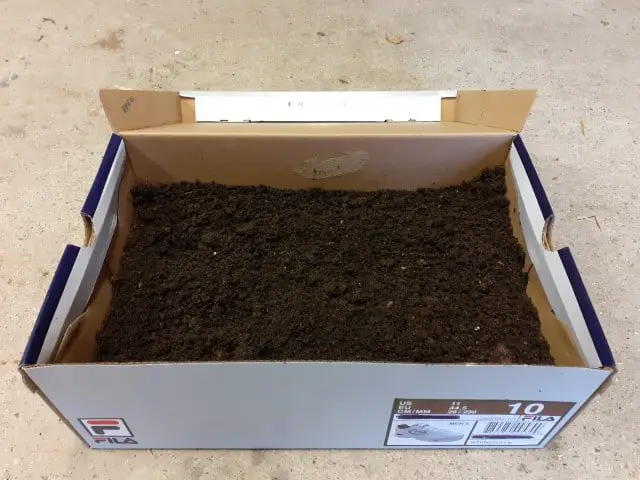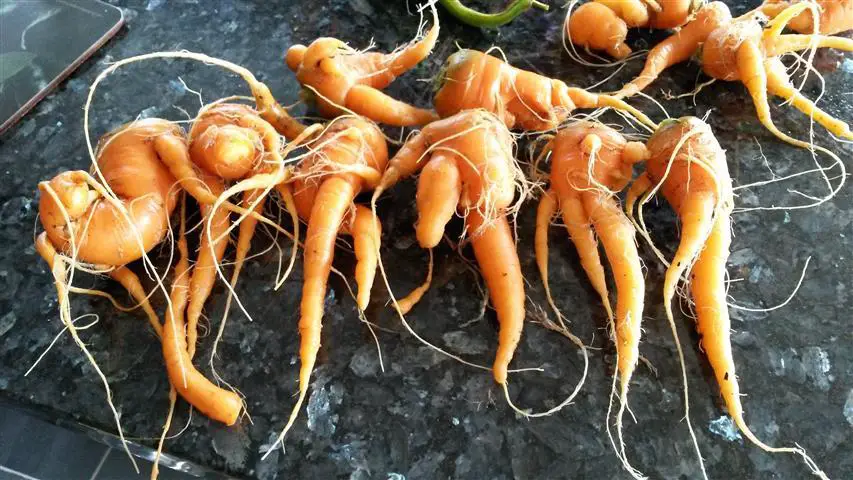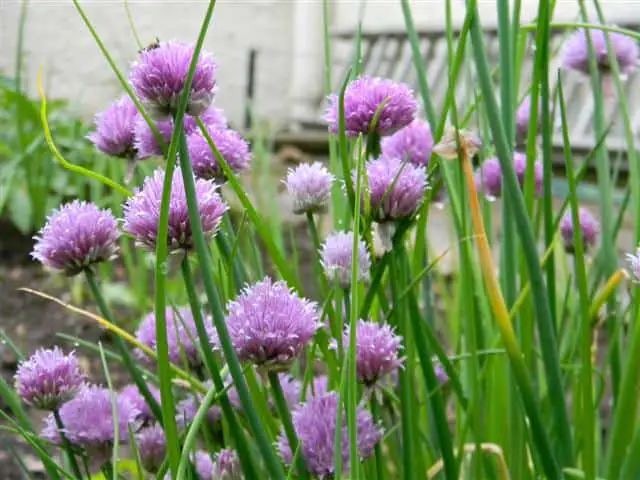One of the questions I am often asked especially with regard to using cardboard for composting or mulching – is whether it is viable or even possible to grow vegetables in a cardboard box.
With so many cardboard boxes available today, owing largely to the COVID-19 pandemic and the subsequent massive rise in deliveries, this is in my mind not only a good question – but a great opportunity for the imaginative vegetable gardener!
The fact is that it is indeed possible and even very practical to grow vegetables or other plants in cardboard boxes, however there are some basic rules that will apply depending on how exactly you go about it.
Growing seedlings in cardboard boxes

There are really 2 main things to consider when you are growing in cardboard boxes, and that is whether you plan to grow plants to maturity or to grow seedings that you can then transfer to the garden.
Plants you can grow to maturity in a cardboard box have to be fast growing and mainly shallow rooted surface plants.
The reason that they have to be fast growing is that the lifespan of your cardboard box is usually only around 2-3 months. As it gets wet in the process of watering the plants, the box eventually loses its integrity and starts to break down.
They also have to be shallow rooted vegetables because normally you cannot have a deep box filled with soil (yes there can be exceptions, if the box side is supported for example) as it would just collapse under the weight.
In this instance then an example of fast growing vegetables (and herbs) that you can grow to maturity would be Arugula, baby carrots, bok choy, lettuce, mixed greens, radish, spinach, and spring onions.
Fast growing herbs would include Basil, coriander, chives, mint, and parsley.
All these plants you should be able to grow in a cardboard box and reap a harvest before the box collapses.
Growing seedlings to transplant
There is virtually no limit to the seedlings you can grow in your box if the goal is to grow them till they are ready to transplant into the garden or Raised Bed.
All of the above vegetables and herbs plus ‘main crop’ vegetables such as broccoli, beetroot, cabbage, cauliflower, cucumber, courgette, squash, eggplant, pumpkin, turnip, and many more.
The 2 exceptions that you may notice are missing in these lists are carrots and parsnips.
This is because I do not recommend transplanting these deep tap-root vegetables because it is extremely difficult for the novice and the professional alike, to get it right.
Getting it wrong means that the root will not develop properly and you will end up with carrots like those in the picture!

I do recommend that for growing carrots and parsnips, plant seeds only. Plant them thinly where they will stay until harvested with minimum thinning out which will only encourage the carrot fly.
Other than those notable exceptions, the fact is that the cardboard planter is just a nursery for bringing on the seedlings until they are ready to transplant.
Transplanting the young seedlings into the garden from the cardboard box can be done in 2 different ways.
- Plant the whole box at once: Place the box with the plants in it next to the area you wish to plant them and cover with garden fleece for a few days to harden them off. Next dig out an area where you wish to grow them the same size and depth of the box, and sink the whole box into the ground. This is ideal as it results in no disturbance for the plant or roots and gives it the best chance of survival
- Traditional transplant: Simply remove the plants from the box as you would normally and transplant into the growing area. Cover over with garden fleece to protect the young plants from inclement weather for a week or so.
How deep should a cardboard box be for planting
Keeping in mind that you may have to lift the box with the soil in it, and the weight vs strength implications involved, you do not want a deep or large box or it will simply not hold the weight.
Another consideration is that you do not want a box with high sides, even if you only plan on a few inches of soil.

On a high-sided box the plants will rush upwards to get the light. This will result in weak spindly plants.
Choose instead a shallow box like a shoe box at about 5-6 inches high (or cut down a tall box to size). In this you should place no more than 3 inches or so of compost mix – NOT garden soil.
There are 2 main reasons for this. The first is that topsoil will be too heavy, and likely full of weed seeds.
The second reason is that young seedlings will grow faster and stronger in a good compost/vermiculite/sand mix – and it is also lighter and not full of weeds.
The recommended mixture for a Square foot garden (see more in this article) is ideal also for this.
So there you have it. No need for expensive store-bought planters when you have a few cardboard boxes to spare.
And the next time you buy a pair of shoes, you know what to do with the box!
Cardboard in the garden
One thing that you should keep in mind if you intend to bury the box is this. Colored or waxed paper often contains contaminants that you may not wish to have in the vegetable patch.
For this reason I would choose only plain brown cardboard boxes, and remove any labels, staples or sticky tape before sinking it into the garden.
As for the box itself, it will simply compost into the soil after about 3 months adding more material and conditioning the soil overall.
There are many different uses of cardboard in the garden to see in this post, where different methods of cardboard gardening are discussed.

